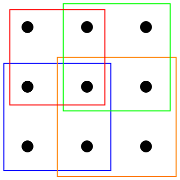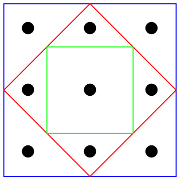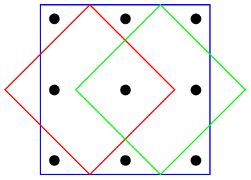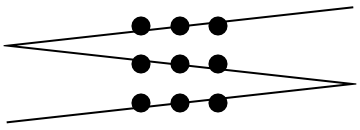I still get comments that my place is in the kitchen, and women shouldn’t do math. Luckily, occurrences of such events are getting rarer. So the world is progressing in the right direction. But gender bias still exists. Multiple studies show that among people of the same level of intelligence, men are perceived as smarter. In layman’s terms, people think women are stupider than they are. I will give my own examples at another time. But now, I want to discuss my model for gender bias.
Let’s denote the mathematical strength of a researcher by S. In real life, if the researcher is female, people perceive her strength as smaller than S. Let us assume that there exists a bias coefficient B, a number between 0 and 1 so that a female researcher of strength S is perceived on average as having strength BS. When B is 1, then there is no bias. But the world is not there yet.
In recent years, there has been a push to hire female mathematicians. Suppose a math department has a cutoff C for hiring a math professor. Being eager to hire a female professor, the department slightly reduces the cutoff by the bias reduction coefficient R, where R is a number between 0 and 1. Thus, the cutoff to hire a female professor becomes RC, which is less than C.
Now consider Alice, who has mathematical strength S, such that S ≥ C ≥ BS ≥ RC. She is perfectly qualified to be hired by the department independent of her gender. However, the department members, on average, perceive her strength as not good enough for a male hire but good enough for a female one. Alice is hired. What happens as a result?
Many male colleagues are angry. They think that because of Alice, they couldn’t hire a male candidate they believe to be stronger. They also expect Alice to be grateful for the opportunity. How will Alice react? It depends on whether Alice herself is biased. I will give two potential scenarios.
Scenario 1. Alice is biased and realizes she is only hired because she is female. Alice thinks that her strength is below the cutoff C. Alice develops impostor syndrome and doesn’t contribute to the department and mathematics as much as she could have, reinforcing everyone’s belief that she is weaker than she actually is.
Scenario 2. Alice is not biased but realizes that she was hired for her gender and not for her mathematics. She gets angry too because she knows she is perfectly qualified. She also realizes that the department expects her to be grateful, while another male hire is thanked for taking a similar position. In this scenario, everyone is angry.
In both scenarios, the intent is to fight the bias. But as a result, no one is truly happy. A supportive environment is not created. And the idea that male and female mathematicians differ in strength is reinforced.
Recently, I talked to a male colleague about gender bias. He was adamant that he isn’t biased and, as proof, described his contribution to hiring females in his department. This is not proof of being unbiased. This is proof of trying to resolve the bias, either sincerely or due to outside pressure. However, the real proof would be to change one’s attitude towards female colleagues. As a female colleague myself, I would notice this change in attitude. But while nothing changes, I can’t accept the fact of female hires as proof of no bias.
To truly resolve the bias, we need B to be equal to 1. To improve the situation, people should collectively work on increasing the bias coefficient B. This is more about changing the attitude.
I am for hiring more female mathematicians as professors. But sometimes, I feel like hiring more female mathematicians without addressing the attitude is treating the symptoms while making the disease worse.
Share:













